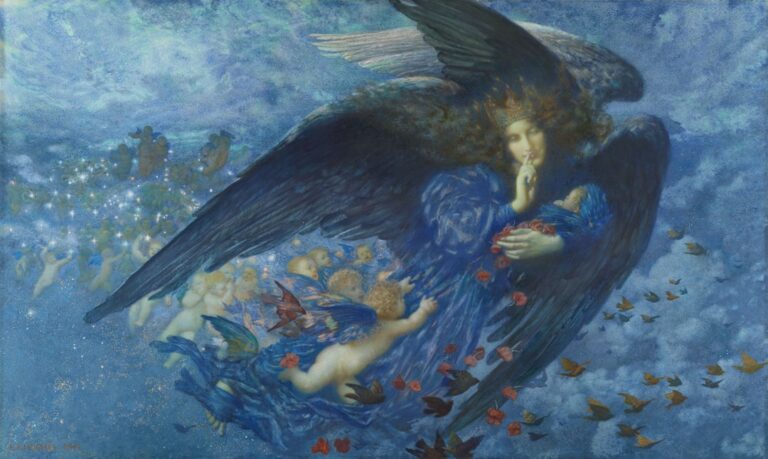Pepe the Frog, a seemingly innocent cartoon character, rose to internet fame in the early 2000s as a popular meme. Created by artist Matt Furie, Pepe quickly became a beloved character in online communities, known for his laid-back and carefree attitude. However, as Pepe’s popularity grew, so did controversy surrounding the character. Pepe became associated with hate symbols and was adopted by the alt-right movement, leading to his classification as a hate symbol by the Anti-Defamation League (ADL). This article will explore the birth of Pepe as an internet meme, his journey into mainstream media, his association with hate groups, and the legal battles over his image.
Key Takeaways
- Pepe the Frog started as an innocent internet meme in 2005.
- Pepe became mainstream in 2015, appearing in various media and merchandise.
- Pepe’s image was misused by the alt-right movement, turning him into a hate symbol.
- Pepe’s impact on the 2016 US Presidential Election was significant, with both candidates referencing him.
- Pepe’s legacy serves as a cautionary tale about the power of memes and their potential to be misused.
The Birth of an Internet Meme
Pepe the Frog was born in 2005 as a character in Matt Furie’s comic series “Boy’s Club.” The comic depicted the adventures of four anthropomorphic animal friends, including Pepe, who was known for his catchphrase “feels good man.” The comic gained a small following online, but it wasn’t until 2008 that Pepe truly became a meme.
Pepe’s popularity as a meme began on the imageboard website 4chan. Users started creating and sharing variations of Pepe’s image with different captions and expressions. These images, known as “rare Pepes,” quickly spread across the internet and became a popular form of expression. Pepe’s relatable and versatile nature made him an ideal meme character, allowing users to convey a wide range of emotions and ideas.
Pepe Goes Mainstream
As Pepe’s popularity grew within online communities, he began to make appearances in mainstream media. In 2015, Pepe was featured in an episode of the animated television series “The Eric Andre Show.” This exposure introduced Pepe to a wider audience and further solidified his status as a recognizable character.
Pepe’s image also started appearing on merchandise, with various companies capitalizing on his popularity. T-shirts, stickers, and other products featuring Pepe became widely available, allowing fans to show their love for the character. However, this commercialization of Pepe also contributed to his eventual association with hate symbols.
The Dark Side of Pepe: From Hate Symbols to Alt-Right Icon
In 2016, Pepe the Frog took a dark turn when he became associated with hate groups and the alt-right movement. The alt-right, a loosely defined far-right political movement, adopted Pepe as a symbol of their beliefs. Pepe’s image was altered to include Nazi symbols and racist messages, turning him into a hate symbol.
This association with hate groups led to Pepe’s classification as a hate symbol by the ADL in September 2016. The ADL stated that while Pepe himself is not inherently racist or anti-Semitic, his image had been co-opted by extremists and was being used to spread hateful messages. This classification sparked controversy and debate over the true meaning of Pepe and whether or not he should be considered a hate symbol.
Pepe’s Impact on the 2016 US Presidential Election
Pepe’s association with the alt-right movement had a significant impact on the 2016 US presidential election. Supporters of then-candidate Donald Trump began using Pepe as a symbol of their support, creating “Trump Pepe” images and memes. This use of Pepe in political campaigns further solidified his association with the alt-right and sparked outrage among those who saw him as a hate symbol.
Pepe also played a role in online political discourse during the election. Supporters and critics of various candidates used Pepe memes to express their opinions and mock their opponents. The widespread use of Pepe in political discussions highlighted the power of memes in shaping public opinion and influencing political discourse.
The Anti-Defamation League’s Classification of Pepe as a Hate Symbol

In September 2016, the ADL officially classified Pepe the Frog as a hate symbol. The ADL’s decision was based on Pepe’s association with hate groups and the use of his image to spread hateful messages. The classification was met with mixed reactions, with some applauding the ADL for taking a stand against hate symbols, while others argued that Pepe had been unfairly targeted.
Critics of the classification argued that Pepe’s association with hate groups was not representative of his original meaning and that he had been hijacked by extremists. They believed that by classifying Pepe as a hate symbol, the ADL was giving these extremists more power and attention. Supporters of the classification, on the other hand, saw it as a necessary step to combat hate speech and extremism online.
Pepe’s Creator Fights Back Against Misuse
Matt Furie, the creator of Pepe the Frog, was dismayed by his character’s association with hate groups. In response, Furie launched a campaign to reclaim Pepe’s image and distance him from hate symbols. He created a series of new comics featuring Pepe in positive and inclusive situations, hoping to remind people of the character’s original meaning.
Furie also took legal action against those who had used Pepe’s image without permission or in a hateful manner. He filed copyright infringement lawsuits against individuals and organizations that had profited from Pepe merchandise or used his image inappropriately. These legal battles were an attempt to regain control over Pepe’s image and protect his original intent.
The Legal Battle over Pepe’s Image
The legal battles over Pepe’s image were complex and ongoing. Furie faced challenges in enforcing his copyright and protecting Pepe from misuse. Some argued that Pepe had become a public domain character due to his widespread use as a meme, while others claimed fair use in their parody or transformative works.
Despite these challenges, Furie’s efforts to reclaim Pepe’s image were not in vain. Several individuals and organizations settled with Furie, agreeing to cease using Pepe’s image and pay damages. These settlements sent a message that unauthorized use of copyrighted characters, especially when associated with hate symbols, would not be tolerated.
Pepe’s Legacy: A Cautionary Tale about the Power of Memes
Pepe the Frog’s journey from an innocent internet meme to a symbol of hate serves as a cautionary tale about the power of memes and their potential for misuse. Pepe’s story highlights the need for creators to protect their work and the importance of responsible online behavior.
The rise and fall of Pepe also demonstrate the impact that memes can have on society. Memes have become a powerful tool for communication and expression, shaping public opinion and influencing political discourse. The case of Pepe shows that memes can be used for both positive and negative purposes, and that their meaning can be easily manipulated.
Pepe’s Journey from Innocuous Frog to Political Controversy
Pepe the Frog’s journey from an innocent cartoon character to a symbol of hate and political controversy is a testament to the power of internet culture. What started as a simple meme on 4chan quickly spread across the internet, capturing the hearts of many with his relatable and versatile nature.
However, Pepe’s popularity also led to his misuse by hate groups and his association with the alt-right movement. This association ultimately led to his classification as a hate symbol by the ADL. Pepe’s creator, Matt Furie, fought back against this misuse, attempting to reclaim his character’s image and protect his original intent.
The legal battles over Pepe’s image and the controversy surrounding his classification as a hate symbol highlight the complexities of internet culture and the challenges faced by creators in the digital age. Pepe’s story serves as a cautionary tale about the power of memes and the need for responsible online behavior. As internet culture continues to evolve, it is important to remember the impact that memes can have on society and to use them responsibly.
Looking for more interesting reads about pepes? Check out this article on Tom’s Rant titled “Hello World!” In this thought-provoking piece, the author explores the cultural significance and evolution of pepes throughout history. From their origins as a popular internet meme to their controversial associations, this article delves into the various interpretations and debates surrounding these beloved frog characters. Discover more about the fascinating world of pepes by clicking here.
FAQs
What are pepes?
Pepe is a cartoon frog character that has become a popular internet meme. The character was created by artist Matt Furie and first appeared in his comic book “Boy’s Club” in 2005.
Why are pepes controversial?
Pepe has been associated with various political and extremist groups, including the alt-right and white supremacists. As a result, the character has been labeled as a hate symbol by the Anti-Defamation League.
What is the origin of the pepe meme?
The pepe meme originated on the imageboard website 4chan in 2008. The character was initially used in a variety of humorous and non-political contexts.
What is the significance of the different variations of pepe?
Over time, different variations of pepe have emerged, each with its own meaning and significance. For example, “Sad Pepe” is often used to express sadness or disappointment, while “Smug Pepe” is used to express a sense of superiority or confidence.
What is the future of the pepe meme?
The future of the pepe meme is uncertain. While the character has been associated with controversial and extremist groups, it is still widely used in a variety of contexts. Some have argued that the character should be reclaimed and used in a positive way, while others believe that it should be retired altogether.













+ There are no comments
Add yours